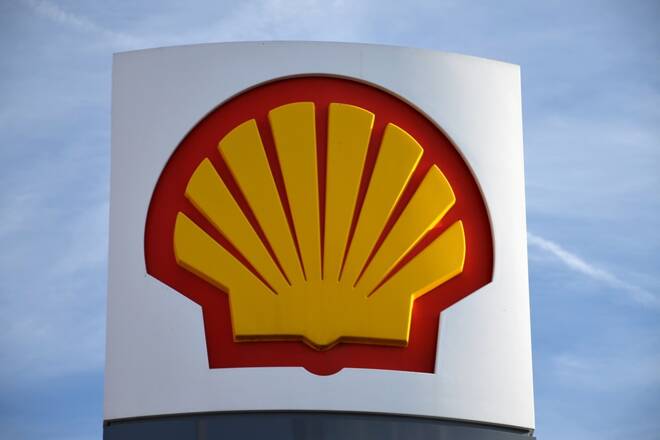Advertisement
Advertisement
Shell Warning Hits Market, While Signs Are Bearish?
Updated: Jan 8, 2024, 13:40 GMT+00:00
British oil major Shell has indicated that financial results for Q4 2023 will be lower due to a $2.5-4 billion impairment.
The latter, as indicated by Shell, has been caused by external developments and macro-economics. Operationally there are no real surprises, as Shell’s Integrated Gas group even is performing better than expected. At the same time, Upstream also has hit very good results, as shown by a three percent (3%) higher performance. Analysis shows that main problems Shell is facing are linked to its Chemicals and Products groups, which are currently showing negative results caused by lower refining margins and low utilization rates in the Chemicals group. Analysts already expect that the current update will result in lower profit expectations overall.
Integrated Gas Trade Pushes Profits
As indicated by Shell, its Integrated Gas division has realized a production of 880,000-920,000 boepd, in line with the 900,000 bpd in Q3 2024. Based on current figures, operational costs at Integrated Gas are slated to be between $1.1-1.3 billion, the same as in the quarter before, but the results of trade and optimization will be much higher than before. Overall, Upstream production is said to be between 1,83-1,93 million bpd, which is around 80,000-90,000 bpd higher than in Q3 2023. Upstream’s operational costs are expected to be between $2.2-2.6 billion, while taxes ($1.6-2.4 billion) are expected be showing positive results. Marketing results are expected to be the same as in Q3, with sales of around 2.35-2.75 million bpd. Chemicals are however under pressure, showing a utilization rate of 78-82%, mainly caused by maintenance in the USA. Renewables is still not making any real headway, as results are still around zero.
The main impairment charges are caused by the Singapore refining and chemicals hub, which are expected to be sold very soon. The potential sale will entail a 237,000 bpd refinery and 1 million metric ton per year ethylene plants on Singapore’s Bukom and Jurong Islands.
The above update of Shell should not be taken lightly. Even that the specifics of the Shell case are not directly linked to its compatriots, the negative developments in the company’s refining and chemical groups will most probably also be relevant for all others. The growing bearishness in downstream markets, as also shown by still fledgling overall crude oil prices, could be a sign for a much stronger headwind scenario in 2024.
Saudi Crude Prices Sign of Demand Weakness Asia
At the same time, the move by the world’s largest oil exporter Saudi Arabia to lower its overall crude oil prices for February is not a good sign. Analysts are already getting worried that the Saudi giant’s move is a strong sign that Asian markets are heading for a showdown. In statements made by Aramco, the company indicated that global demand is still not very strong and indicated that its latest move should be seen as a pro-active action in light of lower demand growth. Even that February-March are normally seen as maintenance months, which results directly in lower demand overall, Aramco is also anticipating on the continuing increased price pressure of US oil production and others.
A potential oil glut is still far from reality, but supply is definitely not under pressure, at least if no real geopolitical crisis occurs. OPEC+, lead by Saudi Arabia, UAE and Russia, already decided months ago to continue its production cut agreements. OPEC members are also not all willing to decrease production further, as some want to monetize their investments of the last years.
Aramco’s move to lower the price of Arab Light in Asia by $2 per barrel above the benchmark, has surprised the market. At the same time, the Saudis also lower the prices for NW Europe, North America and the Mediterranean. The official reason for the Saudi move is clear, weak demand, but also could be linked to continuing Russian crude oil exports to Asia. Even that the Houthi Red Sea conflict is constraining international shipping through the Bab El Mandab and Red Sea region, Russian crude vessels have not been attacked at all, leaving Moscow enough room to supply all Asian markets.
Geopolitics Elephant In The Room
The coming weeks all eyes need to be set not only on the financial reports of international oil and gas majors, or even Saudi Aramco, but also on the underlying fundamentals in Asia and Europe. If the fear for a major economic recession is not materializing, the current bearishness in the market could be changed dramatically. Demand is still holding, there are no signs of demand destruction, the only driver for fundamental volatility is the very strong non-OPEC production, mostly due to American volumes and exports.
The failure of Western sanctions on Russia, especially on crude oil and products, also is still a driving factor. Without both drivers, oil markets would be fully bullish, looking at a potential supply crunch. As long as oil and gas analysts however only look at fundamentals or technical analysis, nothing will change. Geopolitics, even if it is making headlines, such as the Hamas-Israel war, Ukraine-Russia and Houthis, don’t seem to make a difference at presence. Maybe the iceberg in plain sight will be sinking this geopolitical ignorance very soon. Nobody wants to talk about a potential regional war in the Middle East, but signs are on orange-red, not green as some try to pretend.
About the Author
Cyril Widdershovenauthor
Dr. Widdershoven is a veteran Energy market expert and holds several advisory positions at various international think-tanks and global Energy firms.
Advertisement
